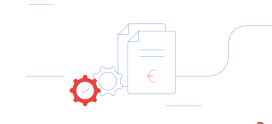23. May 2022
“Copies of copies were pulled”

Sierra Madre has been using Amagno since the end of 2019. In this interview, Managing Director Marcus Da Costa reports on the workflows and processes for which the Hagen-based importer and distributor of Mexican food and high-quality spirits uses Amagno and the added value it brings.
Marcus, why don’t you start by telling us how the story of Sierra Madre actually began?
Sierra Madre was founded 25 years ago by Guido Klaumann in Hagen, at that time as an importer of Mexican food. Because of his Mexican connections, Guido finally came up with the idea of including tequila in his portfolio and adding several dozen varieties of 100 per cent agave tequila to the previously very manageable range of tequila on offer in Germany and distributing them here. However, as gastronomy distribution was very laborious, he decided to focus the company only on B2B – i.e. pure trade. Both as an importer and as a distributor. Over the years, other brands were added. The very special kick came with the Diplomático brand. After Guido had gone a little out on a limb with the amount of rum he was buying from Venezuela – two containers a year – he got lucky: Diplomático was exactly the stuff that fit the German tongue. People were obviously looking for something like that and it went down great.
After some time, a lawsuit fluttered into the house because a big-name discounter with four letters was selling a spirit with a similar name to Diplomático. So the decision was made to market Diplomático in Germany under the name Botucal from then on. That was the moment when the company began to build up a strong momentum and also attract other brands through its success. This is how we have developed from a small company with eight employees to one of the leading German importers and distributors of high-quality spirits, now employing close to 80 people. In the meantime, we even have a strong portfolio of own brands.
What was your initial core problem that made you interested in a DMS/ECM?
Clearly order and time. We had a paper economy where a DMS was long overdue. Actually, we should have made the purchase many years before, but we seemed to be somehow trapped in the paper economy and the running paths: copies were pulled from copies, which were colour-coded so as not to be duplicated in the accounting department and posted there – which happened anyway. The search for receipts was sometimes an immense time-consuming task for the staff in the accounting department, because suppliers asked for invoices and then first had to find out where the invoice was. No one knew where it was and in the end it was on someone’s desk who was perhaps on holiday or still processing the invoice. In order to bring structure into the processes that were in need of improvement, to streamline, organise and optimise processes, we set out to find a suitable solution.
In your opinion, what are the minimum criteria that a good DMS/ECM should fulfil?
The topic of OCR recognition was definitely at the top of the agenda in the search for a suitable solution – i.e. the recognisability of terms and the generation of a relatively simple hit rate. The aim was to automate the scanning process so that no one would have to carry out these steps manually. But topics such as filing and order were also central. The focus was especially on the question of what happens to the documents and how they can be found again. Since the search for documents is different for everyone, this should work smoothly in any case. I like the way Amagno has designed the search. I haven’t seen it like this anywhere else.
It is true that the digitisation of the documents has the disadvantage that the search sometimes takes a few seconds due to the keywording. But that second is worth its weight in gold when you search for something – and find it straight away. Besides that, it was also important for us to be able to create workflows and processes independently, although this doesn’t happen every ten minutes, but rather once or twice a year. (smiles)
How did you hear about Amagno?
About the classic Google search. At the time, I spoke to a few friends of mine who were using the usual systems and looked at them. However, they couldn’t match the themes I would have liked to have mapped. In the end, it was a product video from Amagno that showed the first steps with the software and got me very excited. During the training in Oldenburg, I realised that although the handling is a bit more complex, the possibilities are complex as well.
How do you use Amagno in your company?
We have a relatively high proportion of digital documents in our incoming mail, which we receive via a central e-mail address and which are usually processed directly and automatically. Nevertheless, we still have a few companies that send us their invoices by post, so they have to be scanned manually and processed accordingly. For an initial structure, we already sort our mail at the entrance, so that many documents are already recognised automatically at the beginning.
Probably the biggest lever for us is budgeting. Since we have many brands and each one contributes a certain amount to the costs of an event, advertising or something similar, they have to be broken down accordingly. In the past, a colleague had to file the main invoice in each of the brand folders for the invoice breakdown, because each of these invoices had to be sent as a copy to the brand owner with the budget statement. Today, this is completely unnecessary because we simply enter on the invoice which brands are affected and with which share. At the end of the quarter, the colleague only has to press the button so that copies are automatically generated, which end up in corresponding folders and show all relevant receipts.
We used to have gigabytes of pdf data and an incredible amount of effort to file these documents in the appropriate folders, name them and enter them in tables. With Amagno, no one has to search for anything anymore. Instead, you simply go to the corresponding feature, set the desired time period and within five seconds you get 436 documents that can be exported and forwarded to the appropriate places. Brand owners can also see at a glance which invoice, with which item and which amount it is. As a result, one colleague now has the time to devote to other topics.
So Amagno is an excellent system that saves a lot of time and effort. When someone calls today, we can give them answers to their questions directly, without having to spend a whole morning looking for the right document.
How else does Amagno simplify your everyday work?
Because Amagno reads the documents completely, you can easily carry out duplicate checks in combination with invoice and supplier numbers. If documents come in that already exist, they are not even processed. Our DMS has also helped us to optimise the use of cash discounts one hundred per cent. In the past, of course, this didn’t work because the documents were circulating somewhere and it then simply took too long, which is why our claim lapsed. Today, it’s a push of a button that is done every two or three days by the accounting department – and we save time, money and some nerves.
Amagno also allows me to define criteria that may not take place on a document. For example, a document may not have been budgeted in the first quarter of 2022, where no brand name was noted. Or it may have been budgeted and subsequently rejected as invalid because it turned out that the invoice was issued incorrectly when the payment was made. For all these things, I can define criteria in advance, which are created once as a search and used by different employees. This way, errors can be identified and corrected immediately. In addition to this order and the much faster processes, it is also the process-related savings in the area of time and data volume that bring us great added value.
In which areas do you use Amagno?
We use Amagno exclusively in the invoicing area, although the application possibilities are of course much greater and we also want to exploit some of the potential. For example, the change tracking. Currently, we are still manually maintaining some tables on conditions and other topics that we would like to map in Amagno so that the individual items are easier to edit and find again, because you can see directly via the vision control who changed what and how, and at what time. And you can even reset versions again.
At the moment, we use Amagno primarily for our entire goods and materials invoicing processes as well as travel expenses. Your workflow starts in the accounting department and runs through the corresponding departments, where the invoices are subjected to another factual check in addition to the technical check, until they arrive back in the accounting department and are finally processed there.
The great thing is that you can work on the documents in parallel – and independently of time. In the past, invoices went to budgeting first, while other departments made copies and worked with colour markings in the meantime. This led to everything being sent twice and three times. Today, for certain processes, I can simply say that documents should go different ways at the same time. That way, you don’t run the risk of the discount deadline running out or others having to wait forever for information on the processing status.
Do you already have interfaces that you use in interaction with Amagno?
Not yet. However, we are planning to set up an interface to Sage’s S100 so that the documents can also be called up directly from there. That’s why our next step is automation, so that in future we no longer have to enter the data records manually, but can also get them directly into S100.
How was the initial acceptance of the employees who currently use Amagno in the company?
If a change takes place in the company, you always have those who directly perceive and understand the added value of this change. At the same time, you also have those who find everything new strange at first and reject it. The acceptance of Amagno was relatively quickly recognisable in our company. This could be due to the fact that we always listen very sensitively to our colleagues to see to what extent there are still difficulties in working with the respective software and then work together to find a solution. One person in our company found the introduction of our new DMS horrible at the beginning. Shortly afterwards, however, she said that the system was so great and that she couldn’t understand how we had been able to work all these years without such a solution. In their daily work with Amagno, our employees have been experiencing little “aha”-experiences every now and then, which inspire them.
I think the secret recipe lies in good preparation, structured processes, good test manoeuvres and in people being properly trained and involved. Then, with a good system, acceptance should come relatively quickly.
How do you want Amagno to develop further in the future?
Our procedures and processes are now so far ready, except for a few small things that will be added over time. But they are implemented so quickly that I wouldn’t call it a development.
Our next important steps are the interface to S100, so that in future we will no longer have to enter accounting records by hand and the calls can be made directly from the accounting system of the merchandise management system. We also plan to transfer more complex documents to Amagno. However, we have not yet come up with a clear structure for this.
Sometimes it is tempting to file everything in Amagno because everything is also indexed. I think it’s great when colleagues only click on the document number when checking the invoices of the forwarding company and all the documents appear immediately where this document number or the respective keyword is also listed. This is spectacular, but of course it also eats up data. However, it also has the disadvantage that a lot is displayed that is not needed in a pure keyword search.
Would you recommend Amagno to others?
Yes, although I have not had any experience with other document management systems so far, I cannot say anything negative about Amagno. I would recommend it again at any time without hesitation. It might be a bit more complex for some people at the beginning with the magnet settings and stamps, but the possibilities are so varied and just so good. Once you have grasped that, everything goes by itself. It is stable, you have so many advantages and I would always choose it over any other system without hesitation.
If you had to describe Amagno with one word, then…
…this word would be transparency, because Amagno always makes everything everywhere so beautifully presentable and possible. For many, it is super valuable that everything is now so transparent through Amagno.
How would you sum up your overall conclusion about Amagno?
Any company with more than 20 employees that has at least a certain amount of staff traffic and has not yet dealt with Amagno has only itself to blame.



